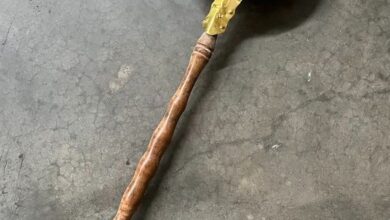Article: The Complexities of Self-Defense and Firearm Use in Home Invasions

ADVERTISEMENT
Article: The Complexities of Self-Defense and Firearm Use in Home Invasions
The use of firearms in self-defense, particularly during home invasions, is a topic that generates strong opinions and emotions. Incidents where an intruder is killed by a homeowner or the homeowner’s family member often lead to public debates about the ethics of self-defense, the proportionality of force used, and the implications of firearm accessibility, especially when AR-15s or other high-powered weapons are involved.
The Right to Self-Defense
In many countries, the right to defend oneself and one’s property is enshrined in law. In the United States, for example, the Castle Doctrine and Stand Your Ground laws provide legal protections for individuals who use force, including lethal force, in defense of their home. These laws are rooted in the principle that individuals should not have to retreat when faced with a threat in their own home.
In the case referenced by the image, the use of an AR-15 by the homeowner’s son to defend against a burglar raises questions about what constitutes reasonable force. While the legal system in many places allows for the use of lethal force to stop a threat, the choice of weapon—especially one as powerful as an AR-15—can complicate public perceptions of the incident.
The Ethics of Proportionality
A central issue in these debates is the proportionality of the force used in self-defense. Critics of using firearms like the AR-15 in self-defense argue that these weapons are overpowered for most home defense scenarios, leading to outcomes where the force applied may be seen as excessive.
ADVERTISEMENT
Supporters, however, contend that in a high-stress situation like a home invasion, the priority is to neutralize the threat as quickly and effectively as possible. They argue that the type of weapon used should be whatever the homeowner has available and feels most capable of defending themselves with.
The Role of Firearms in Self-Defense
Firearms are often touted as the great equalizer in self-defense, providing individuals with the means to protect themselves against physically stronger or more numerous attackers. The AR-15, a semi-automatic rifle, is particularly popular among some gun owners for home defense due to its power, accuracy, and capacity.
However, the use of such a weapon also amplifies the stakes of any encounter. The AR-15’s firepower means that it is more likely to cause fatal injuries, which raises the ethical question of whether such outcomes are justified in cases where the intruder may not have been armed or posed a lethal threat.
Public Reaction and Legal Implications
ADVERTISEMENT
Public reactions to these incidents are often divided. Some view the homeowner’s actions as justified, emphasizing the right to protect one’s home and family. Others may sympathize with the family of the intruder, particularly if the intruder was young or unarmed, and question whether the use of deadly force was necessary.
Legally, these cases often hinge on the specific circumstances of the incident, including whether the homeowner reasonably believed that their life was in danger. The legal outcomes can vary widely depending on the jurisdiction, the specific laws in place, and the details of the encounter.
Conclusion
The use of firearms in self-defense, especially in the context of home invasions, is a deeply complex issue. It involves balancing the rights of individuals to protect themselves with the ethical considerations of using potentially lethal force. As society continues to grapple with these questions, it is clear that each case will continue to provoke strong reactions and require careful consideration of the facts and the laws that govern self-defense.
ADVERTISEMENT




